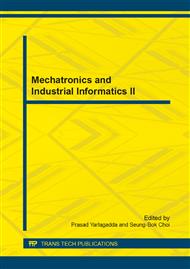p.131
p.136
p.141
p.149
p.154
p.160
p.164
p.169
p.174
Dynamic Pricing and Inventory Temperature Decisions for Fresh Foods with Variable Demands
Abstract:
Considering the special properties of food supply chain and fresh foods, provides multi-phases inventory model for fresh foods based on shelf life, thereinto demand function is dependent on price and time; in the model shortages are allowed, which assures the fresh foods can be sold out before the time limit. It proves that the total average profit is a restrict concave function of decision variables, namely, the solution to the system equations necessarily satisfy maximum conditions. Finally, numerical examples and relevant conclusions based on the model analysis are presented. It illustrates that through the optimized model’s traverse within the allowable inventory control temperatures, retailers can get the optimal inventory temperature control decision. And so retailers can obtain optimal total average profit by choosing corresponding optimal phasic price under the optimal inventory temperature.
Info:
Periodical:
Pages:
154-159
Citation:
Online since:
July 2014
Authors:
Price:
Сopyright:
© 2014 Trans Tech Publications Ltd. All Rights Reserved
Share:
Citation:


